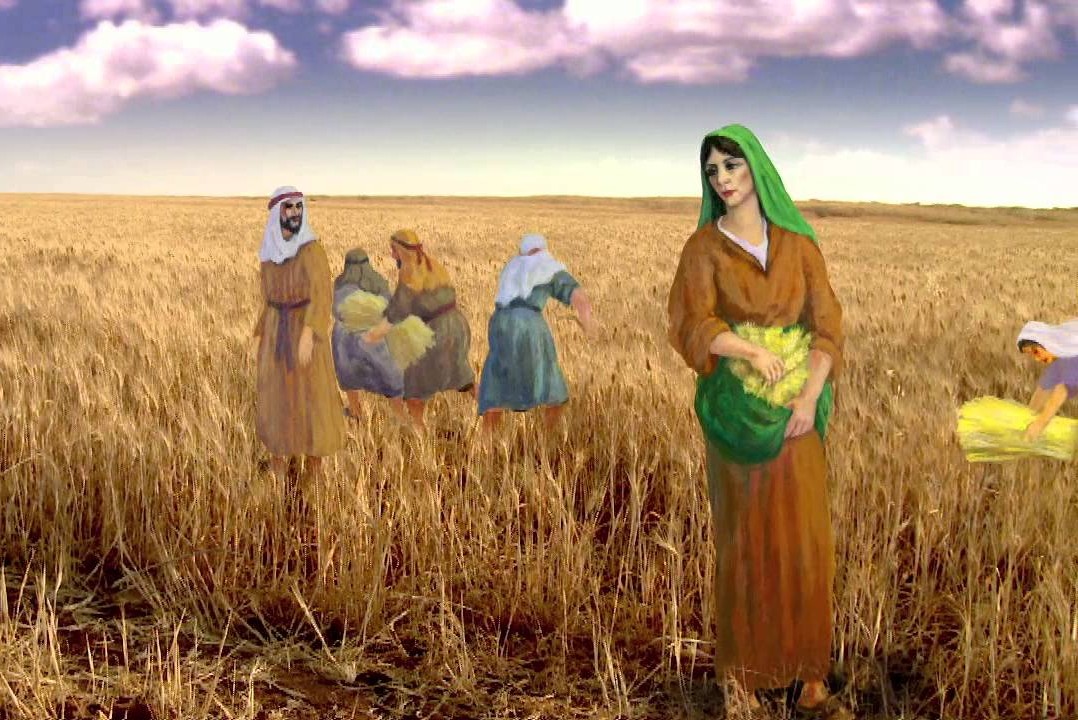It is an almost universal Jewish custom to read Megillat Ruth on Shavuot. The most widely-accepted basis for reciting the story of Ruth is her conversion to Judaism, for it was – on a small, personal scale – a recreation of the grandiose acceptance of Torah at Har Sinai by the entire Jewish nation many years prior, which is the theme of Shavuos. Just as Ruth “entered under the wings of the Shechinah” and committed herself to a life of Torah, so did Am Yisroel.
 Upon further examination of Megillas Ruth, its connection to Shavuos seems rather weak. Firstly, the text does not clearly narrate the gerus (conversion) process which Ruth underwent; in fact, rabbinic authorities dispute the very point at which the conversion occurred, reflective of its apparent lack of centrality to the story. Furthermore, the bulk of the Megillah is devoted to describing the economic and emotional plight of Ruth and Naomi and their rise to prominence in the Jewish community as a result of their relationship to Boaz; Ruth’s gerus experience is not the core theme of the story in any form. Why, then, is Megillas Ruth intrinsically connected to Shavuos?
Upon further examination of Megillas Ruth, its connection to Shavuos seems rather weak. Firstly, the text does not clearly narrate the gerus (conversion) process which Ruth underwent; in fact, rabbinic authorities dispute the very point at which the conversion occurred, reflective of its apparent lack of centrality to the story. Furthermore, the bulk of the Megillah is devoted to describing the economic and emotional plight of Ruth and Naomi and their rise to prominence in the Jewish community as a result of their relationship to Boaz; Ruth’s gerus experience is not the core theme of the story in any form. Why, then, is Megillas Ruth intrinsically connected to Shavuos?
To answer this question, we need to address another, more basic concept. That is, we need to understand why Shavuot is one of the Shalosh Regalim (Pilgrimage Festivals). Pesach, the first of the Regalim, represents our relationship with God as our redeemer. Sukkos, the last Regel, symbolizes Hashem’s role as our protector and caretaker. The unique relationship engendered by each of these festivals merits its own focus and serves as the basis for each Regel. Shavuos, on the other hand, is the anniversary of the giving of the Torah. As important as this day was for the Jews who stood at Sinai, and as critical as the Torah is to the fabric of the Jewish People, Shavuos seems to be just a very crucial anniversary; as such, it is somewhat puzzling why it merits the status of a Regel, whereas other extremely important anniversaries in Biblical times were not endowed with this status.
The answer is that Shavuos is not a mere anniversary in the typical sense. Rather, the experience of Matan Torah – the giving of the Torah – forever changed the Jews’ relationship with God, transforming and bestowing kedushah upon the nation. We became a “goy kadosh”, as the Torah terms it, at Matan Torah, and an unprecedented closeness with Hashem was given rise. Our lives were indescribably altered for eternity.
This is the connection of Megillas Ruth to Shavuos. As a result of her embrace of Torah, Ruth’s life was utterly transformed. She rose from the existence of a penniless and barren widow, facing a miserable present and a bleak future, to a life of spiritual richness and fulfillment, leaving an eternal mark as the progenitor of the Davidic dynasty. Just as Ruth’s encounter with the Shechinah transformed her existence, so did our encounter with Hashem at the Revelation redefine and recreate our lives and our future, instilling in our souls kedushah, fulfillment and closeness to God.

